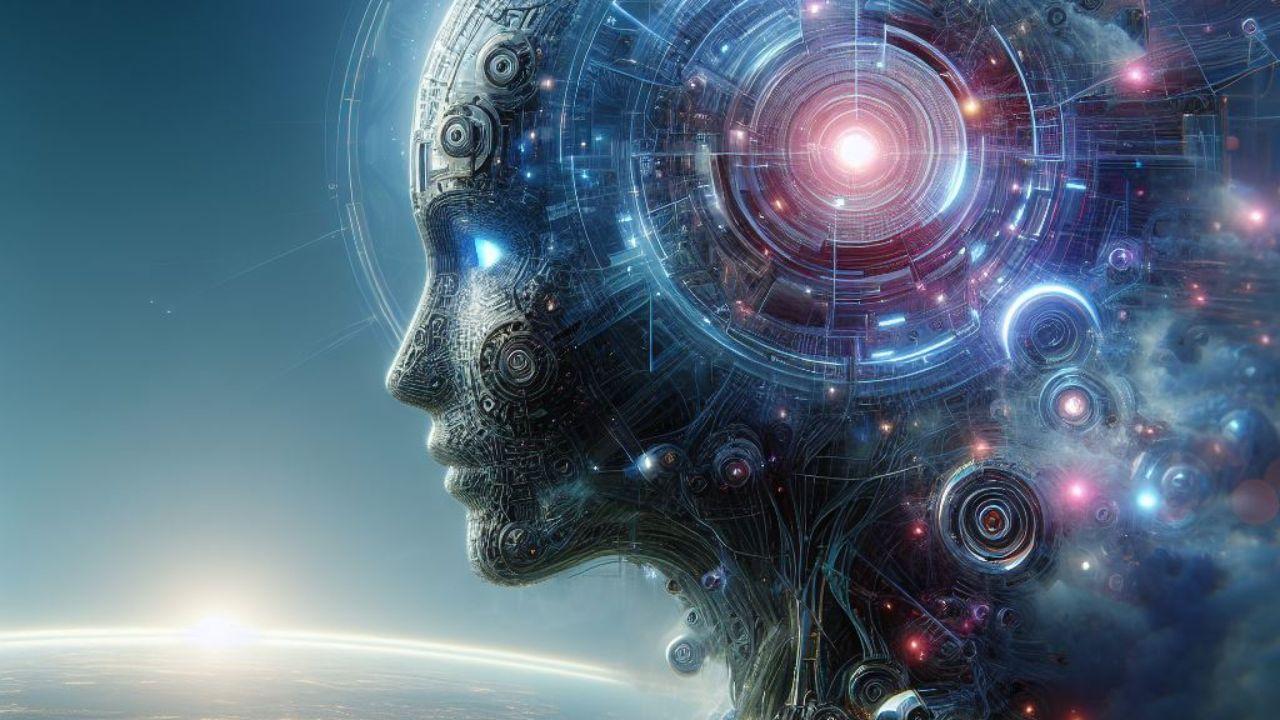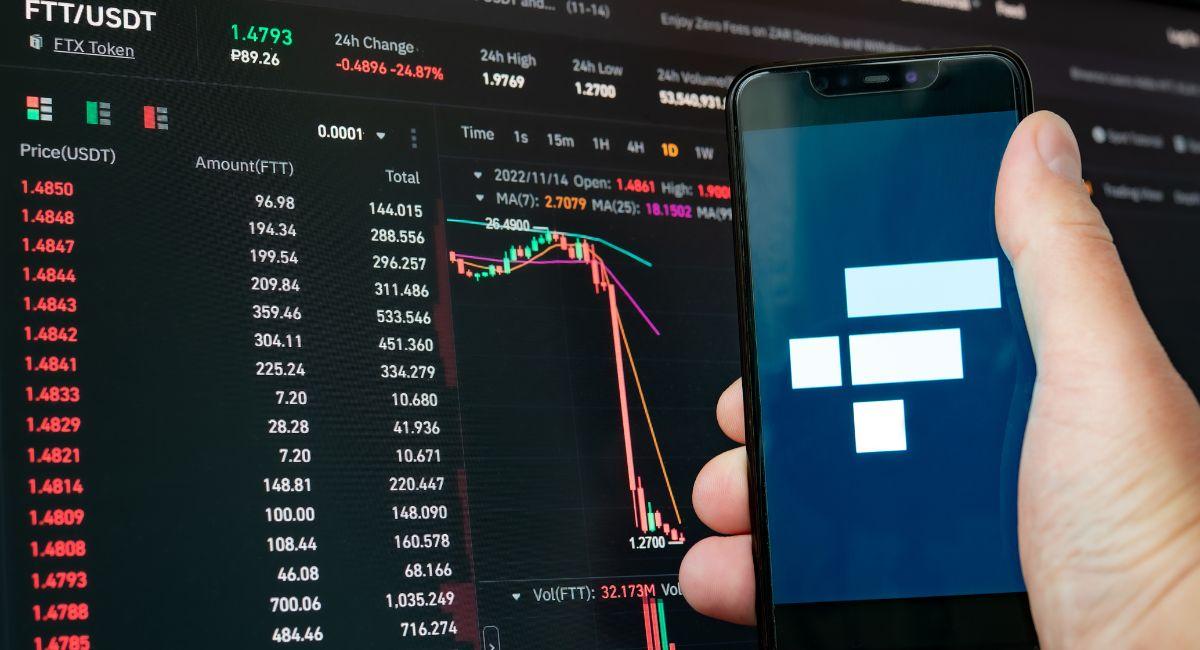Top 10 Amazing Ways Blockchain Can Reduce the Carbon Footprint of AI Training In 2024

Artificial intelligence (AI) is revolutionizing industries, but its ever-growing power comes at a hidden cost – a massive environmental footprint. Training complex AI models requires immense computational resources, leading to significant energy consumption and greenhouse gas emissions. However, a surprising technology is emerging as a potential solution – Blockchain.
The Dark Side of AI: The Environmental Cost
The environmental impact of AI training is a growing concern. Here’s why:
- Energy-Hungry Hardware: Training AI models often involves powerful hardware like GPUs, which consume vast amounts of energy, especially when running for days or even weeks.
- Massive Datasets: Modern AI thrives on large, complex datasets. Storing, processing, and transferring these datasets requires significant energy expenditure.
- The Rise of Cloud AI: Cloud-based AI training is becoming increasingly popular, but data centers housing these systems can be major energy consumers.
These factors combined contribute to a significant carbon footprint for AI development. As AI adoption grows, so too will its environmental impact, if left unchecked.
Blockchain: An Unexpected Ally for Sustainable AI
While blockchain is primarily associated with cryptocurrencies, its unique properties can contribute to a more sustainable future for AI:
- Green Consensus Mechanisms: Traditional blockchain protocols, like Proof-of-Work (PoW), are notoriously energy-intensive. However, newer, greener consensus mechanisms like Proof-of-Stake (PoS) are gaining traction. PoS consumes significantly less energy, making blockchain a more viable option for sustainable AI.
- Distributed Training: Blockchain can facilitate distributed training of AI models. Instead of relying on centralized data centers, the training workload can be shared across a network of efficient, geographically dispersed computing nodes. This reduces reliance on large, energy-hungry facilities.
- Incentivizing Renewable Energy: Blockchain can be used to create incentive systems that reward users for contributing renewable energy sources to power AI training processes. This encourages the use of clean energy and reduces reliance on fossil fuels.
Also, read – Top 10 Amazing Ways AI And Blockchain Will Reshape The Future Of Money: The Dawn Of AutoFi
Specific Examples of Blockchain-based Solutions for Sustainable AI in 2024

While the concept of using blockchain to reduce the carbon footprint of AI training is relatively new, several pioneering projects are putting this concept into action:
-
The World Wide Green Grid (WWGG): This project leverages blockchain technology to create a global network of renewable energy producers and consumers. AI training tasks are matched with computing resources powered by renewable energy sources within the WWGG network. Users can track the exact source of the energy used to train their AI models, promoting transparency and green practices.
-
OCEAN Protocol: This decentralized data marketplace utilizes blockchain to facilitate the secure and efficient sharing of valuable datasets for AI training. By enabling fractional ownership of data, OCEAN removes the need for redundant data collection, reducing the overall energy consumption associated with data processing.
-
ClimateChain Coalition: This non-profit organization focuses on developing AI models specifically designed to optimize energy usage within industries like manufacturing and logistics. These AI models, trained on a blockchain-based platform, can identify and eliminate inefficiencies in energy consumption patterns, leading to significant reductions in carbon footprint.
-
AICube.io: This AI development platform utilizes a blockchain-powered token system to incentivize sustainable training practices. Users receive tokens for adopting energy-efficient training methods or contributing computing resources powered by renewable energy to the network. These tokens can be used to access premium AI model training services or participate in governance decisions within the platform.
-
Element AI and IOTA Foundation: This partnership aims to develop a secure and transparent framework for tracking the environmental impact of AI models throughout their lifecycle. By leveraging blockchain’s immutable ledger, they can track energy consumption during training, deployment, and ongoing operation, enabling developers to identify areas for improvement.
These are just a few examples, and the landscape is constantly evolving. As awareness grows around the environmental impact of AI, we can expect to see even more innovative blockchain-based solutions emerge in the coming years. These solutions have the potential to transform the AI development landscape, fostering a future where cutting-edge technology and environmental responsibility go hand in hand.
How Blockchain Can Reduce the Carbon Footprint of AI Training in 2024?
 The ever-growing demand for artificial intelligence (AI) has brought a hidden cost to light: the immense amount of energy required to train complex AI models. This high energy consumption translates to a significant carbon footprint, raising concerns about the environmental sustainability of AI development. However, blockchain technology is emerging as a game-changer, offering innovative solutions to reduce the carbon footprint of AI training in 2024. Let’s delve into 10 amazing ways blockchain can make a positive impact:
The ever-growing demand for artificial intelligence (AI) has brought a hidden cost to light: the immense amount of energy required to train complex AI models. This high energy consumption translates to a significant carbon footprint, raising concerns about the environmental sustainability of AI development. However, blockchain technology is emerging as a game-changer, offering innovative solutions to reduce the carbon footprint of AI training in 2024. Let’s delve into 10 amazing ways blockchain can make a positive impact:
1. Decentralized and Greener Compute Power Sharing:
- Underutilized Resources Put to Work: Traditional AI training relies on centralized data centers with powerful computers, often operating below capacity. Blockchain facilitates the creation of peer-to-peer networks where users can share their unused computing resources for AI training tasks. This distributed approach utilizes idle resources more efficiently, reducing the overall energy demand.
2. Transparency and Traceability of Green Energy Usage:
- Matching AI Training with Renewable Energy Sources: Blockchain can track the source of energy powering the computations used in AI training. This transparency allows users to choose and prioritize training on networks powered by renewable energy sources like solar or wind power, minimizing reliance on fossil fuels.
3. Tokenized Incentives for Sustainable Training Practices:
- Rewarding Energy-Efficient Training Techniques: Blockchain enables the creation of tokenized incentive systems. Users who adopt energy-efficient AI training methods or contribute renewable energy to the network can be rewarded with tokens, promoting a shift towards sustainable practices within the AI development community.
4. Fractional Ownership of Training Datasets:
- Unlocking Untapped Data Potential: Large, valuable datasets essential for AI training are often siloed within private organizations. Blockchain allows for the fractional ownership and secure sharing of these datasets. This not only democratizes access to valuable data but also reduces the need for duplicate data collection and processing, thereby lowering the carbon footprint.
5. Secure and Efficient Model Sharing and Collaboration:
- Eliminating Redundant Training: Blockchain facilitates the secure and efficient sharing of pre-trained AI models. Researchers and developers can access and leverage existing models for their projects, reducing the need to train entirely new models from scratch. This eliminates redundant computations and associated energy consumption.
6. Immutable Record-Keeping for Responsible AI Development:
- Tracking the Environmental Impact of AI Models: Blockchain’s immutable ledger can track the entire lifecycle of an AI model, including its training process and energy consumption. This transparency allows for better monitoring and evaluation of the environmental impact of AI development, enabling continuous improvement towards sustainability.
7. Proof-of-Stake Consensus Mechanisms for Lower Energy Consumption:
- Moving Beyond Energy-Intensive Mining: The traditional Proof-of-Work (PoW) consensus mechanism used in some blockchains consumes vast amounts of energy. However, Proof-of-Stake (PoS) mechanisms, gaining traction in 2024, rely on coin ownership for validation, significantly reducing the environmental impact of blockchain operations powering AI training.
8. AI-powered Optimization of Training Processes:
- AI for AI’s Sake: A Sustainable Cycle: Blockchain can be leveraged to develop AI algorithms specifically designed to optimize the training process itself. These AI tools can identify and eliminate inefficiencies, leading to faster training times and lower energy consumption for future AI models.
9. Community-driven Initiatives and Sustainability Standards:
- Collaborative Efforts for a Greener Future: Blockchain fosters the creation of decentralized communities focused on sustainable AI development. These communities can establish and enforce environmental standards for AI training practices, promoting responsible development within the ecosystem.
10. Raising Awareness and Encouraging Green AI Development:
- Transparency Breeds Change: Blockchain’s inherent transparency allows for greater public scrutiny of the environmental impact of AI training. This increased awareness can incentivize developers, researchers, and investors to prioritize sustainable practices and support the development of green AI solutions.
A Sustainable Future for AI
By harnessing the power of blockchain technology, the AI community can make significant strides towards reducing the carbon footprint of AI training. These innovative solutions promote efficient resource utilization, encourage responsible development practices, and pave the way for a future where AI innovation and environmental sustainability go hand in hand. As blockchain technology continues to evolve, we can expect even more groundbreaking solutions to emerge, ensuring that the incredible potential of AI is unleashed in a way that safeguards our planet for generations to come.
The Road Ahead: Challenges and Opportunities for Sustainable AI with Blockchain
While blockchain presents a compelling path towards sustainable AI, the journey is not without its hurdles. Here’s a closer look at the challenges and opportunities that lie ahead:
Challenges:
- Scalability and Efficiency: Current blockchain implementations can struggle with scalability, limiting the number of transactions they can process. This can be a bottleneck for large-scale AI training tasks requiring substantial computational resources.
- Security Concerns: While blockchain boasts robust security features, vulnerabilities can still emerge. Ensuring the security of the network and the data stored within it is crucial for maintaining trust and adoption within the AI community.
- Standardization and Interoperability: The fragmented nature of the blockchain landscape, with various protocols and platforms, can hinder interoperability. Establishing common standards for data exchange and communication between different blockchain platforms is essential for seamless integration with AI training processes.
- Regulation and Governance: As the use of blockchain for AI training evolves, clear regulatory frameworks need to be established. These regulations should promote innovation while mitigating potential risks associated with data privacy, security, and potential manipulation within the network.
- User Adoption and Awareness: Encouraging widespread adoption of blockchain-based solutions for sustainable AI requires raising awareness within the AI development community. Educating users on the benefits and functionalities of these solutions is crucial for driving wider acceptance.
Opportunities:
- Technological Advancements: The continuous development of blockchain technology holds immense potential. Advancements in scalability solutions, security protocols, and interoperability standards can pave the way for robust and efficient integration with AI training processes.
- Collaboration and Open-source Initiatives: Collaboration between industry leaders, researchers, and developers can foster the creation of open-source tools and resources that make blockchain-based sustainable AI solutions more accessible and user-friendly.
- Incentivized Participation and Community Building: Developing innovative incentive structures that reward users for adopting sustainable training practices and contributing to the development of the ecosystem can accelerate progress towards widespread adoption.
- Government and Industry Partnerships: Governments and industry leaders can collaborate to establish clear and supportive regulatory frameworks that encourage responsible development and implementation of blockchain for sustainable AI.
- Public Awareness Campaigns and Education: Raising public awareness about the environmental impact of AI and the potential of blockchain to mitigate this impact is crucial. Educational initiatives can foster a more responsible and sustainable approach to AI development.
Conclusion: A Collaborative Effort
By acknowledging the challenges and embracing the opportunities, the AI community can leverage blockchain technology to create a more sustainable future for AI development. Through collaborative efforts, innovation, and a commitment to responsible practices, we can ensure that AI continues to revolutionize various fields while minimizing its environmental footprint. The road ahead requires a collective effort from developers, researchers, policymakers, and the public to navigate the challenges and unlock the true potential of blockchain for a greener and more sustainable future of AI.




























































